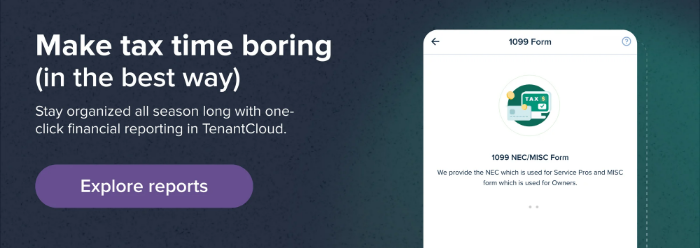At tax time, landlords must submit a Schedule E to report their income and loss from rental real estate. Like any tax document, when first looking at the Schedule E, it can feel daunting to know you’ll need to complete it. Preparing to fill out this schedule can take a lot of time and effort on your part, especially if you want to take full advantage of deductions. But there are tools you can use and habits you can form that will take most of the stress out of tax time. Filling out this form will feel less of a lift when you work through a set process—and then stick to that process moving forward. Let’s look at ways you can minimize your level of effort during tax time while you prepare to maximize your benefits:
1. Document
Preparing for tax day is a year-long process; however, the first time you fill out a Schedule E, you probably will not have had processes in place to aid you yet, so consider it a great time to evaluate systems that will work for you in the long run. The first step in the process is documenting financial transactions for each of your properties. Some transactions are easy to document since card and bank accounts capture many transactions. Others, like cash purchases, are harder to track. If you purchase anything with cash, it’s important to document it immediately. There’s a risk of losing receipts or of them becoming illegible, so be sure to snap a picture of these before it’s too late. Moving forward, it’ll be easier to track transactions if you avoid cash purchases and stick to methods that automatically document your transactions.
Related: Rental Property Accounting Tips: The Ultimate Guide to Creating Powerful Landlord Reports
2. Store
The second step is properly storing your information in one place. If you document an expense but don’t know where you put it, that doesn’t help during an IRS audit. Consider using software that makes this step easier. Choosing one that you can readily access on the go will make it easier to stay on top of this step. TenantCloud’s software, for example, allows you to create expenses easily and attach supporting documentation to those expenses. You can also import transactions from your business accounts into this tracking system through Excel so everything business-related is in one place.
3. Categorize
Once you’ve documented and stored your transactions, grouping them into categories is the next step. Since Schedule E has specific buckets for income and expenses, like rents, supplies, repairs, advertising, and the like, it makes the most sense to organize your transactions according to these groupings. If you use a landlord software that collects rents for you, like TenantCloud, it’ll be easy to collect and group this income together. Having transactions well documented, stored, organized, and easily available will ease your mind that you’re accurately reporting on Schedule E.
Related: Rental Property Tax Deductions for Landlords to Keep in Mind in 2022
4. Populate
The last step is populating your draft Schedule E before finalizing it with your tax professional, ensuring everything is accurate. This is easy to do if your software feeds all transactions into this form based on the way you’ve categorized them. If there are transactions you weren’t sure how to categorize, review them with your advisor. If any number looks off at this point, dig deeper into the category to make sure you understand the details behind the number.
Related: Tax Season 2022: IRS Backlog, Electronic Submissions, Direct Deposit and More
Don’t make tax time more stressful than it needs to be. Set yourself up for success by preparing properly throughout the year and acquiring software that can do the heavy lifting for you. In a digitally savvy world, be sure to take advantage of tools that will make life easier for you. Check out TenantCloud’s software and see how it can benefit your processes.







